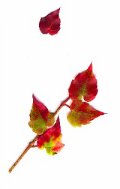 Season of mists and mellow fruitfulness…and colour! Autumn is upon us in the northern hemisphere and the leaves are changing colour once again. Time to get yourself somewhere deciduously and decidedly woody to see the reds, yellows, and oranges. But, what makes all those colours in autumn leaves? More to the point, why is the subject such an evergreen article idea for science writers?
Season of mists and mellow fruitfulness…and colour! Autumn is upon us in the northern hemisphere and the leaves are changing colour once again. Time to get yourself somewhere deciduously and decidedly woody to see the reds, yellows, and oranges. But, what makes all those colours in autumn leaves? More to the point, why is the subject such an evergreen article idea for science writers?
Some of the colours are produced by the natural decomposition of the compound that makes leaves green during the spring and summer: chlorophyll. Part of the story is about waste products being excreted into the leaves by the tree and yet another aspect is the withdrawal of still useful pigment compounds and nutrients prior to leaf fall.
However, Bernhard Kräutler and his team at the University of Innsbruck, Austria, have just published a study that reveals a previously unknown chlorophyll decomposition product in the leaves of Norway maples. The discovery hints at a previously unknown aspect of autumnal biochemistry. It’s not unweaving the rainbow, as it were, it’s laying bare nature’s wonders. Via Colorful Leaves.
![]() Müller, T., Rafelsberger, M., Vergeiner, C., & Kräutler, B. (2011). A Dioxobilane as Product of a Divergent Path of Chlorophyll Breakdown in Norway Maple Angewandte Chemie International Edition DOI: 10.1002/anie.201103934
Müller, T., Rafelsberger, M., Vergeiner, C., & Kräutler, B. (2011). A Dioxobilane as Product of a Divergent Path of Chlorophyll Breakdown in Norway Maple Angewandte Chemie International Edition DOI: 10.1002/anie.201103934